In this article, I’ll share two of my favorite exercises that are great tools for both horses and riders. The first is a simple cavalletti exercise on a circle that demands accuracy. The second is a three-jump gymnastic that can be customized to target your horse’s specific training challenges. The cavalletti circle exercise helps riders improve track-riding skills, and the predictability of the gymnastic exercise allows riders to focus on their positions and encourages horses to improve their jumping forms.
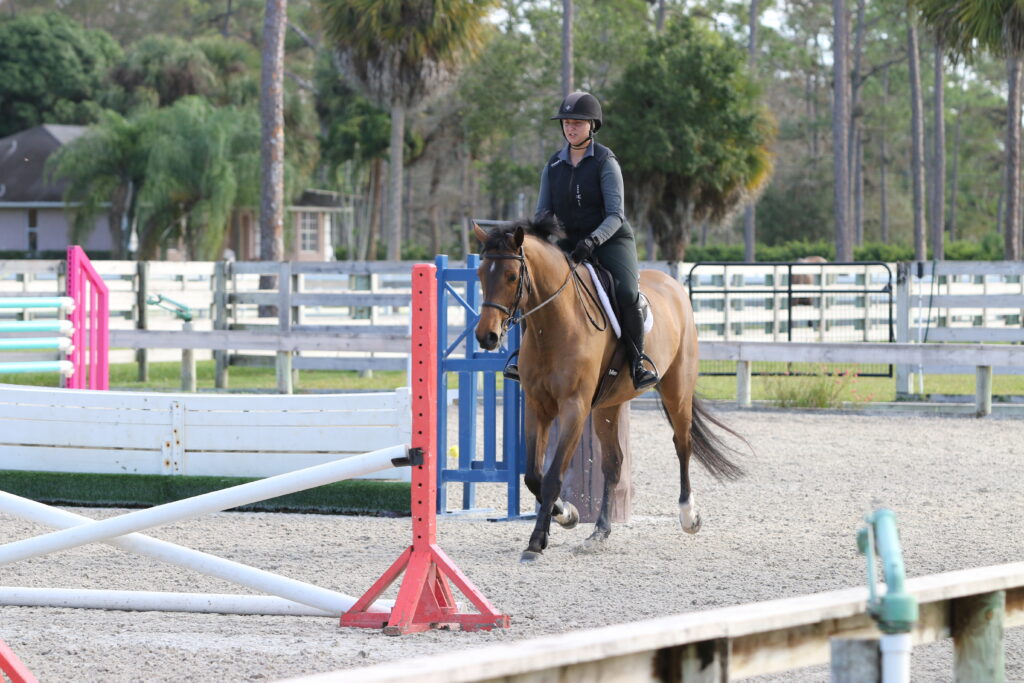
Cavalletti Circle Exercise
This single cavalletti exercise is a good way to learn how to properly balance your horse by using all of your aids and becoming more accurate with them. This helps to keep your horse on the correct track—one of the most important things for a rider to learn. The result will be smoother, better hunter rounds.
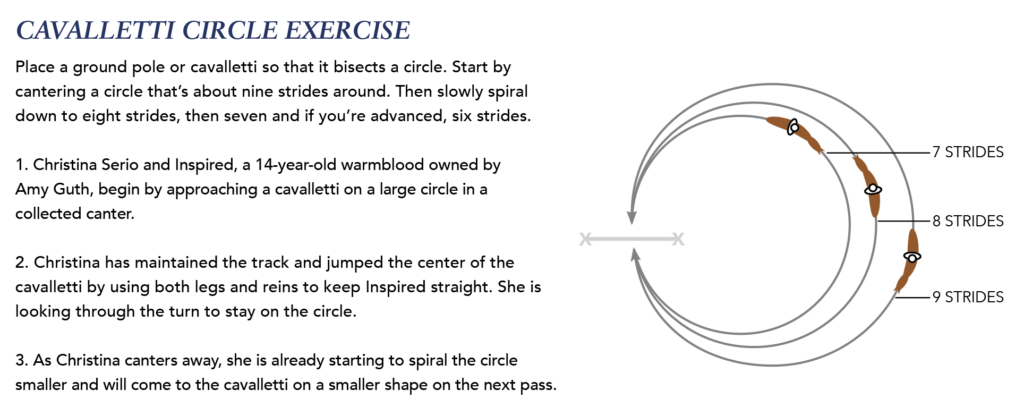
Study the diagram above to set up the exercise. Then start by cantering the circle over the cavalletti to the right. The goal is to stay on the correct track by jumping the center of the cavalletti. To do this, you’ll need to use all your aids—legs, seat and reins. On the approach, use your seat to create a collected step while looking through the turn to see your distance. Use your inside leg to your outside rein to help your horse bend while your outside leg supports him so he doesn’t fall out. As you’re in the air over the cavalletti, use a low opening inside rein to show him where you want to go, but make sure you can still feel both sides of your horse’s mouth—using only one rein will make your horse fall away from that rein aid. Your horse should stay perfectly straight over the cavalletti without drifting left or right. Each horse is different and has varying levels of rideability, so you may need to experiment a bit with your aids to see what is most effective.
As you practice the exercise, you’ll find that getting a deep distance on a collected step will help your horse get the correct lead and keep him in better balance. If you leave the ground long at such a small jump, more than likely, you’ll land on the wrong lead. If this happens, bring your horse back to trot, ask for the correct lead and approach the cavalletti on a collected stride again.
Once you are jumping the cavalletti on the large circle well, begin turning sooner to make the circle smaller while continuing to jump the center of the cavalletti. The circle should be no smaller than seven or six strides.
When you’re successfully completing the exercise to the right, give your horse a break and then repeat the exercise on the left lead. As you get more comfortable with this exercise, you’ll notice how you can use your track to “help” the distance and apply it to your course-riding. If the distance is going to be too deep, you can bring the track out wider. If it’s going to be too long, you can move your track closer to the inside of the circle.
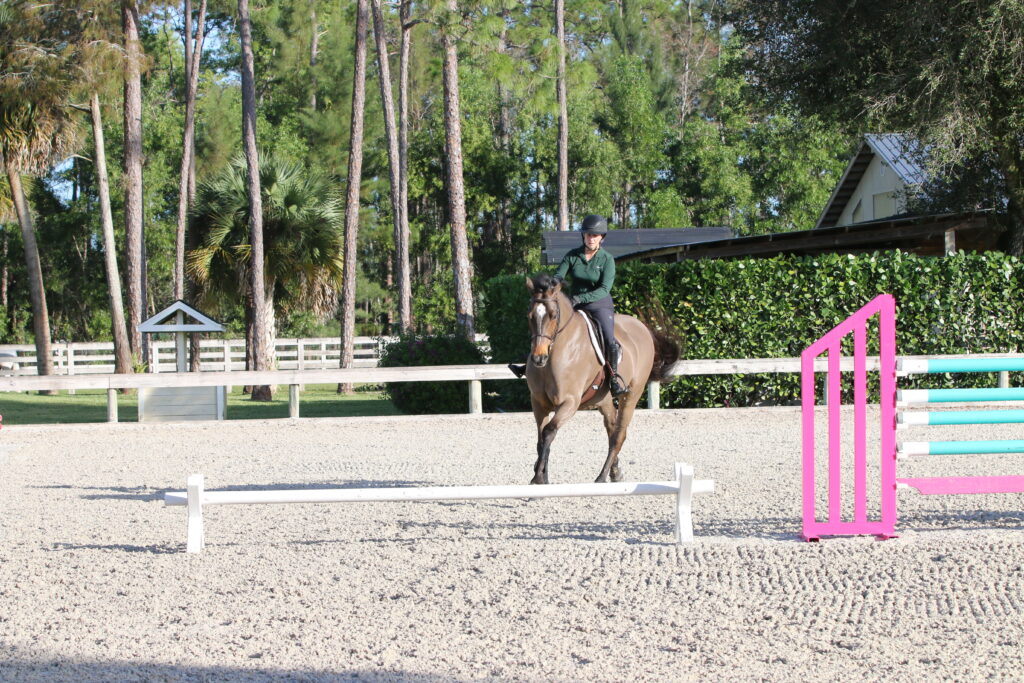
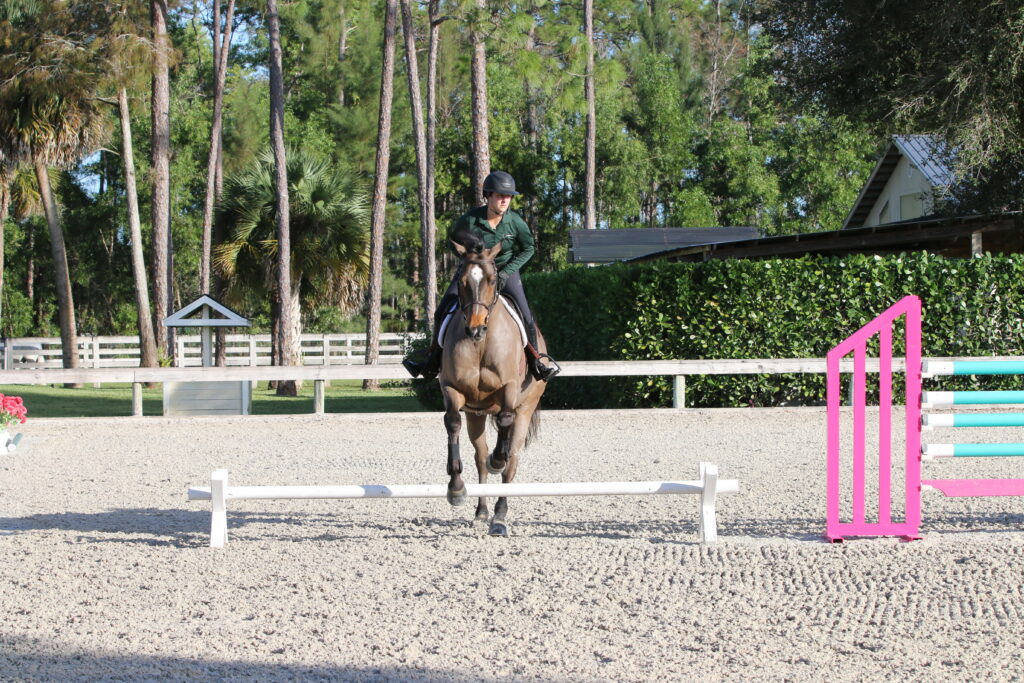
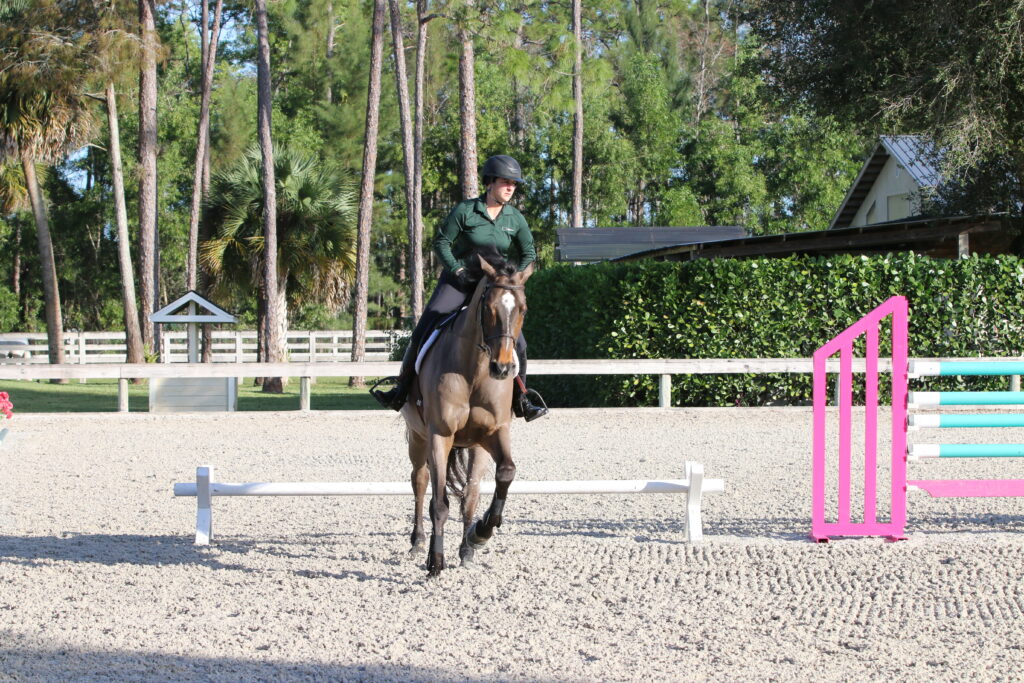
Three-Jump Gymnastic on a Straight Line
The beauty of this gymnastic is that you can customize it to suit and improve your individual horse. You can use it as a tune-up for an older or more experienced horse who may get bored, or you can use it to correct a horse who is unbalanced or crooked. And because it’s a predictable exercise, you can also focus on your position, allowing your horse the freedom to use his body well.
You will need—and I can’t stress this enough—a qualified professional to watch and tell you whether what you’re doing is having an effect. The professional can help you decide, as you work through the exercise, whether your horse’s response and effort indicate it’s time to make the jumps higher, the oxers wider or other small adjustments. And that’s why having a professional to help you with this is critical.
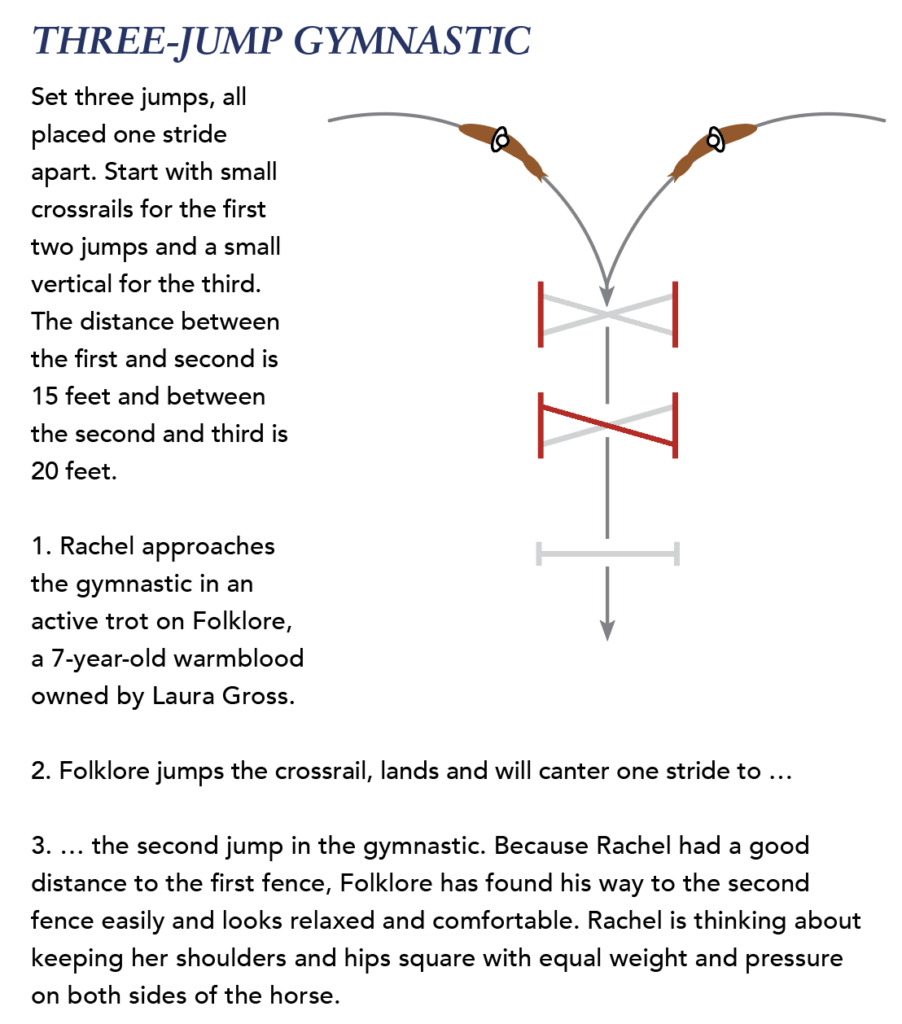
Study the diagram at right to set this exercise. Set it so you can approach it from the left and the right, alternating directions each time. You’ll need three jumps that you start by setting very low. Note that the distances in the diagram are approximate—a key factor in the success of this work is that you adjust all these exercises so your horse can stay relaxed and comfortable jumping them. By setting up your horse with a nice comfortable distance, you’ll encourage him to jump the best he can.
Approach the gymnastic in an active trot. You’ll trot in over the first jump and canter out over the second two. Getting into the gymnastic on the correct distance is really important. Everything should feel like it comes up in stride and is easy for your horse. If you get the correct distance to the crossrail, the rest of it usually comes up very nicely. You want your horse to take his time in the gymnastic—he shouldn’t rush. Sit still and give him the time to bascule, or arc, over the fence and canter away.
As you ride through the exercise, think about your position. If you are out of balance, it will be even more evident through a combination. Make sure your hips and shoulders are square and keep equal weight and pressure on both sides of your horse. Your backbone should also line up with your horse’s. If you can work on your position and make it second nature, it’s going to help your accuracy in every part of riding.
Once you are successfully riding through the gymnastic, you can make the following adjustments: lengthen the distance between the second and third fence by about a foot, raise the height of the first crossrail, change the second crossrail to an oxer, change the vertical to an oxer. You’ll want to introduce only one change at a time. Again, you need to work with a trainer to determine the correct distances and heights for you and your horse, and what other modifications, if any, you should make to get the most from this exercise.
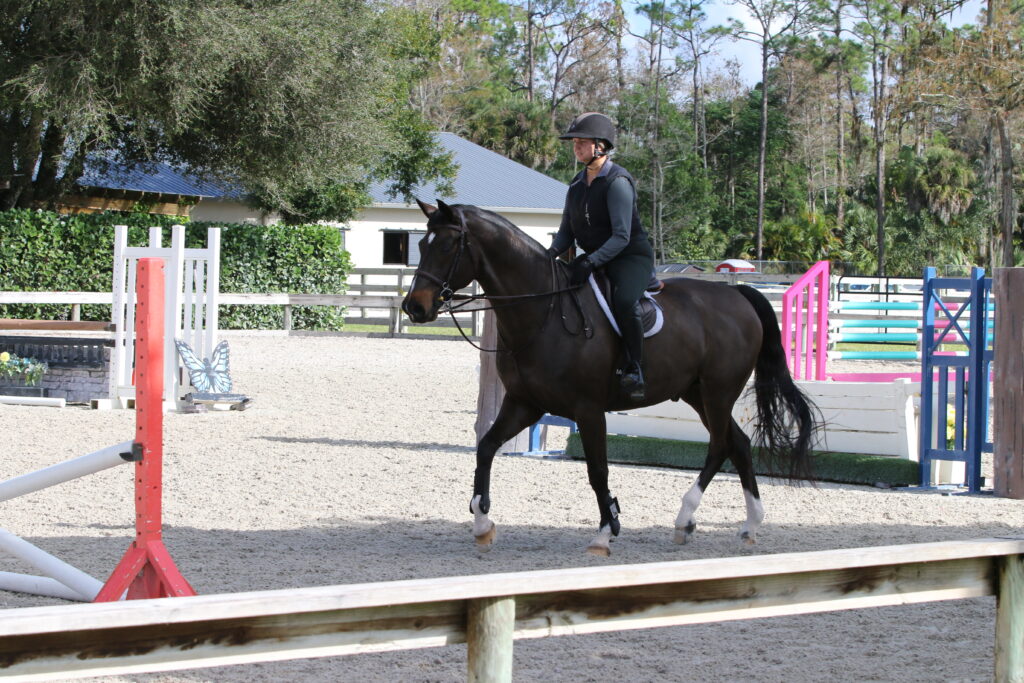
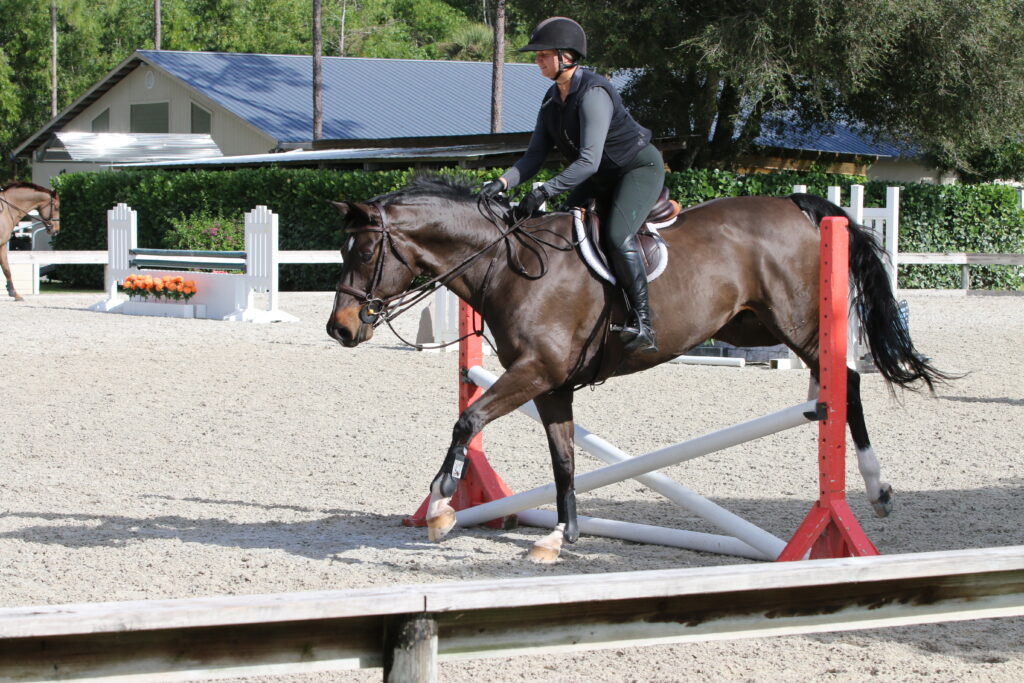
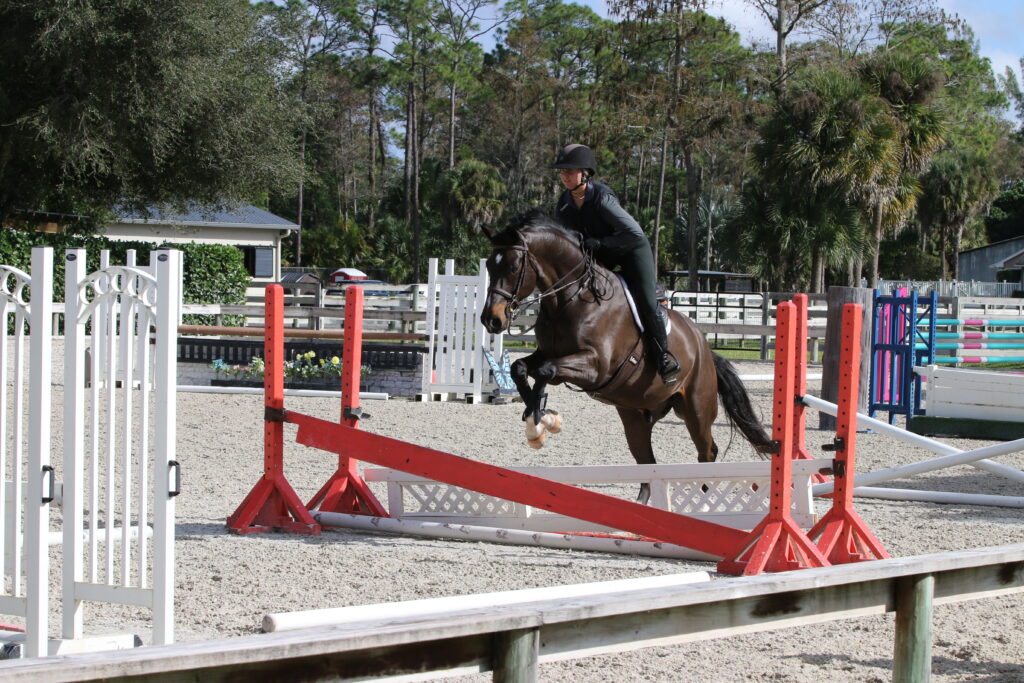
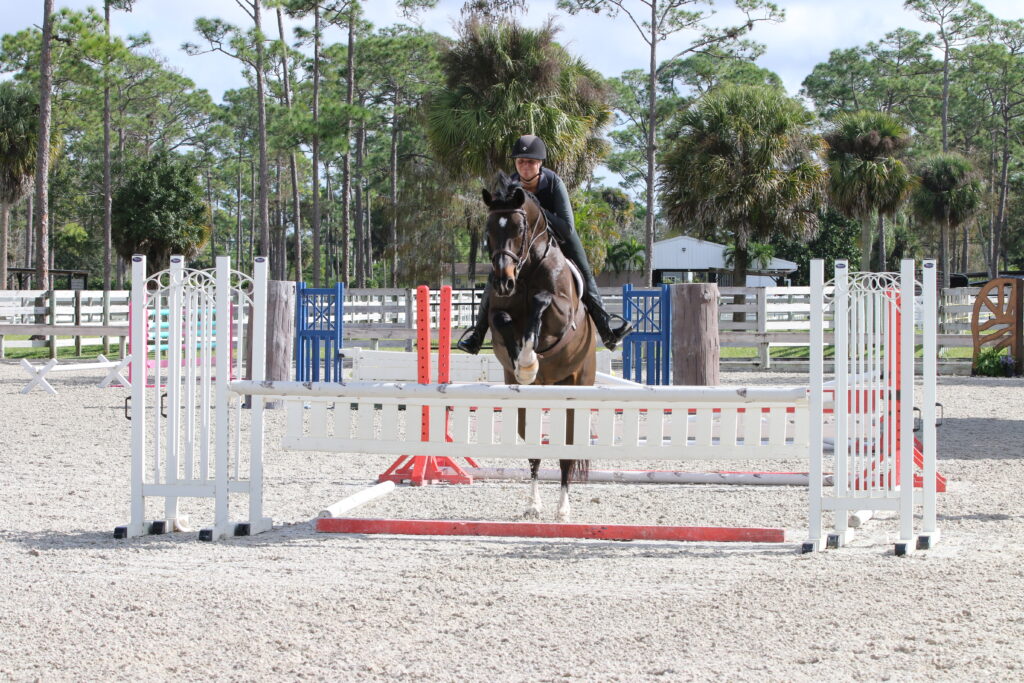
The end result of working through the gymnastic is a larger fence from when we started, with Folklore producing a beautiful jump. You will notice we have customized the exercise by using guide rails on either side of the fence, creating a lane. This reminds Folklore to stay straight and put more effort into his jump while Rachel focuses on her position.
Customize the Three-Jump Gymnastic
You can customize this exercise depending on what your horse needs. Here are some ways to modify it:
- If you are struggling to find your distance to the first crossrail, use a placing pole set at 8 or 9 feet in front of the crossrail.
- If your horse cuts one way or the other after the last fence, halt him on a straight line after it.
- If you horse needs help with straightness, place ground rails rolled in to about 8 to 10 feet wide on the approach and landing sides of the second and third jumps to act as a lane. As your horse gets comfortable, you’ll move the ground rails in gradually until they’re about 6 feet apart. As you trot to the first crossrail, land and canter out over the second jump, the lane encourages him to stay straight and even. This helps him stay focused and put more effort into his jump and is a nice way to get him straighter without your needing to do as much.
About Louise Serio
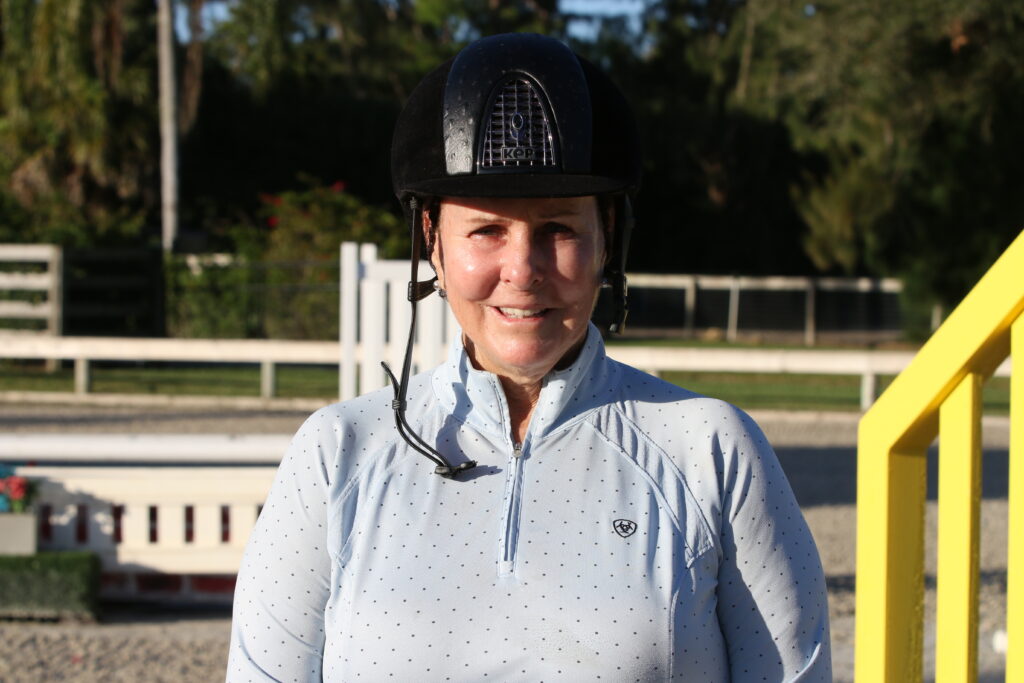
Louise Serio is a two-time U.S. Hunter Jumper Association World Champion Hunter Rider Professional Rider Champion. In 2012, was inducted into the National Show Hunter Hall of Fame. She has served on multiple committees to improve the sport over the years and won USHJA’s Committee Excellence in Service Award in 2012. She also helped found and create the WCHR Program and the American Hunter-Jumper Foundation. She lives at her Derbydown stables in Kennett Square, Pennsylvania, and Wellington, Florida. Her daughter, Christina, is a riding professional and her son, TR, is a farrier. Her granddaughter, Mary Jo, splits her time between the English and Western riding worlds.
This article originally appeared in the Spring 2023 issue of Practical Horseman.
This article is sponsored by Sentinel.











